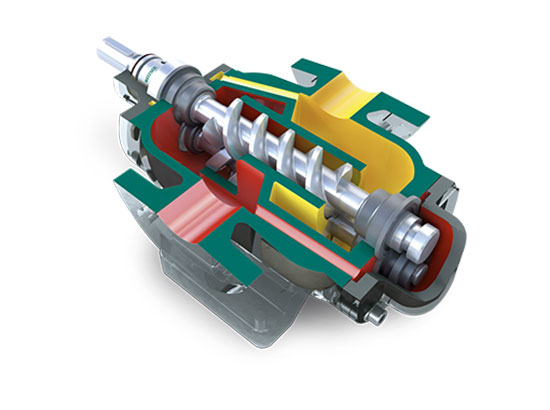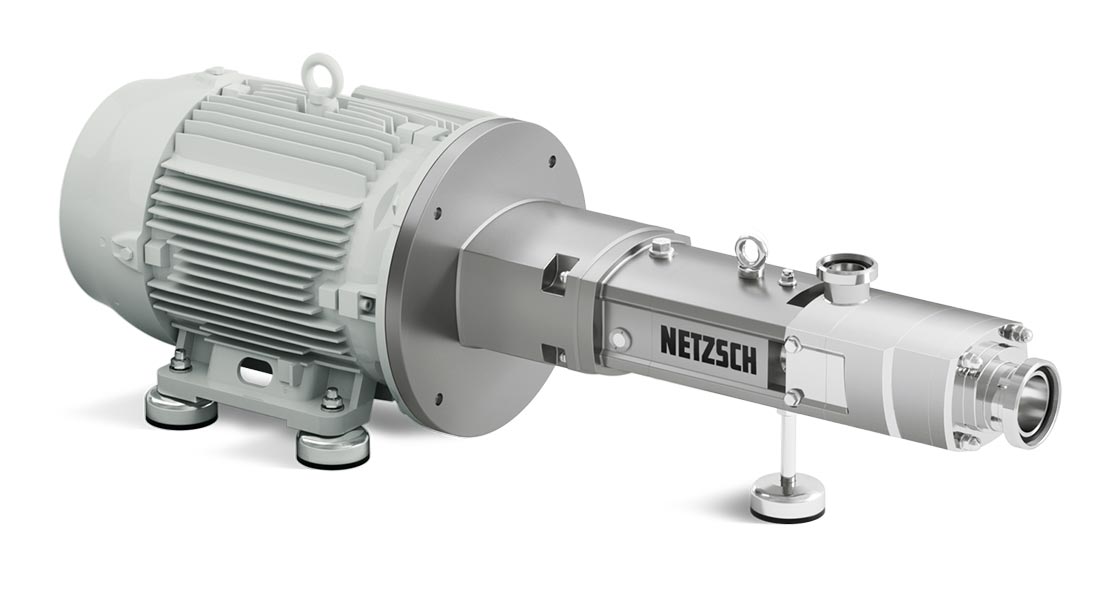Whether lubricating liquids, high viscosities, or hygienic demands: Screw pumps handle media gently, efficiently, and with low pulsation. As a helical cut variant of the gear pump, they are a kind of positive displacement pump. With their unique design, they have some special features.
Multi Screw Pumps
Technical Data & Characteristics:
- Delivery rate: up to 2,500 m³/h (11,007 gpm)
- Delivery head: up to 1,000 m (3,280 ft)
- Pressures: up to 100 bar (1,450 psi)
- Viscosities: up to 200.000 cSt
- Temperatures: 0 °C up to +300 °C (32 °F up to +572 °F)
- pH-value: 0 – 14
- Gases: up to 5 %
- Solids: up to 1 % (max. 0.001 mm)
- Installations: horizontal, vertical
- Submersibilities: immersed
- Depth: up to 20 m (65.6 ft)
- self-priming possible
- ATEX: suitable for ExZones 1 & 2
- API, ISO, EN standard
- hygienic design available
- Drives: electro, hydraulic

Screw pumps get their name from the two or three displacing elements, which rotate against one another and have a form similar to the shape of a spindle screw. These self-priming pumps are also called screw pumps, screw compressors or spiral plunger pumps.
The spindle screws rotate against one another in the pump casing. Only one of the spindles is driven. It transfers the torque via a thin hydrodynamic film to one or several rotating, interlocked spindles. Screw pumps that handle non-lubricating liquids or liquids that contain solids require an additional drive that synchronizes the spindles with one another.
Since the spindles are shaped regularly and in the form of a thread, they interlock as gears do. The hollow spaces created are also called cavities; these serve to convey the liquids to be pumped: When the spindles turn, they move the fluid handled within the chambers from the suction side to the pressure side.
The design of screws and casing, which are matched to one another, ensures a hydraulic balance of the high axial and radial forces that occur as well as the long service life of the pump. Handling works in both directions: With the simple reversing of the drive, the handling path can be changed. Depending on the application, there is another advantage: Screw pumps work very quietly.
Screw pumps are used especially in the automotive sector for handling fuel for vehicles. Due to their even, gentle handling, screw pumps in industry are especially well suited for liquids with high viscosity and for sensitive media since the fluid is subjected to only very low shear forces. However, the generally small conveying chambers only enable the handling of media with low solid content and grain size.
Screw pumps are offered for a wide range of applications. Pump capacities from approximately 4 to more than 2,000 m³/hour are possible without a problem. Here, the transporting units withstand differential pressures of up to 100 bar depending on the design.
Due to their design, screw pumps are especially good at handling lubricating media. Many screw pumps are also available in hygienic designs and can therefore be used to handle foods, in the pharmaceutical industry or the manufacturing of cosmetics.
Since they have proven themselves especially for handling lubricating, viscous liquids, screw pumps were originally mainly used for the transport of oil and products that contain oil: In the oil & gas sector, in shipping, energy generation and tank farms. Screw pumps are still relatively new in the manufacturing of food and pharmaceuticals, cosmetics, and chemistry.
But in these industries too, the pumps win people over with their many benefits as compared to centrifugal pumps or other positive displacement pumps. A special focus is on these pumps’ handling, which is very gentle and self-priming, as compared to many other technologies. Centrifugal pumps subject the fluid handled to high centrifugal forces and are therefore especially suitable for media that are not sensitive. Screw pumps, by contrast, handle the fluid so gently that even media that contain solid particles can be transported without damage.


